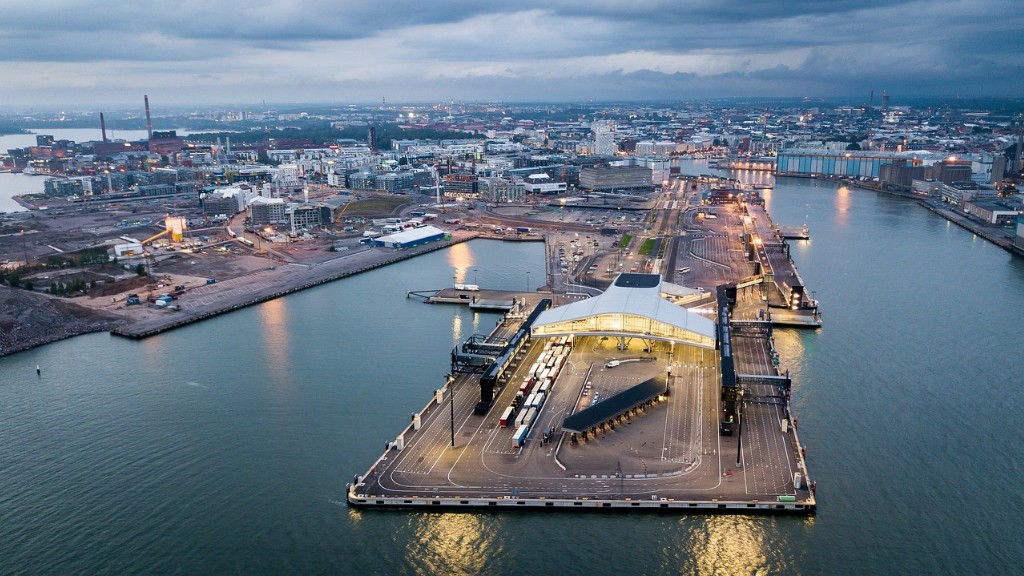How Did Finland Become Rich?
Finland, a country known for its high standard of living and strong economy, has a fascinating history of economic development. Throughout the years, Finland has undergone significant transformations that have shaped its path towards prosperity. This article delves into the key factors that contributed to Finland’s remarkable economic success story.
1. Education and Innovation
One crucial aspect of Finland’s rise to economic prosperity is its exceptional focus on education. The country’s education system has consistently ranked among the best in the world, emphasizing equality and high-quality teaching. This emphasis on education has led to a highly skilled workforce, fostering innovation and driving economic growth.
Finland’s commitment to research and development (R&D) has also been instrumental in its economic success. The government invests heavily in R&D, working collaboratively with businesses and universities to drive innovation. This approach has yielded groundbreaking technological advancements and allowed Finland to become a global leader in sectors such as telecommunications and renewable energy.
2. Nokia and the Tech Industry
No discussion about Finland’s economic success would be complete without mentioning Nokia. This Finnish telecommunications company played a pivotal role in transforming Finland into a global tech powerhouse during the late 20th century. Nokia’s success not only boosted Finland’s GDP but also attracted foreign investments and encouraged entrepreneurship within the tech sector.
Although Nokia experienced challenges in recent years, its impact on Finland’s economy remains significant. The company’s journey showcased Finland’s ability to adapt and innovate, leading to the emergence of new tech startups and the growth of other industries such as gaming and software development.
3. Social Welfare and Equality
Finland’s commitment to social welfare and equality has been crucial in ensuring widespread prosperity. The country consistently ranks high in indices measuring social equality, providing its citizens with a high quality of life and a strong social safety net. This approach fosters stability, reduces income disparities, and contributes to economic growth by enabling citizens to participate fully in society.
In addition, Finland’s comprehensive healthcare system and robust social security programs alleviate the financial burdens of individuals, enabling them to focus on personal and professional development. By prioritizing the well-being of its population and ensuring equal opportunities, Finland has created a fertile environment for economic success.
4. Economic Diversification
Another key factor behind Finland’s economic prosperity is its focus on economic diversification. While Nokia played a pivotal role in the tech industry, Finland recognized the importance of cultivating other sectors for a sustainable economy.
In recent years, Finland has actively invested in renewable energy, forest industries, and bioeconomy. By nurturing these sectors, Finland has reduced reliance on specific industries, mitigating the risk of economic downturns and ensuring long-term growth.
The government’s support for small and medium-sized enterprises (SMEs) has also been instrumental in diversifying the economy. Providing access to funding, mentorship programs, and other resources empowers entrepreneurs and encourages innovation across a wide range of industries.
5. Connectivity and Infrastructure
Finland boasts a well-developed infrastructure that facilitates economic growth. The country’s excellent connectivity, both in terms of physical infrastructure and digital networks, enables efficient trade and smooth business operations.
Investments in transportation, including an extensive network of roads and railways, have enhanced logistics and facilitated the movement of goods domestically and internationally. Additionally, Finland’s advanced digital infrastructure has given the country a competitive edge in the digital economy, attracting tech companies and stimulating innovation.
6. Natural Resources and Sustainability
Finland’s wealth of natural resources has played a role in its economic development. The country has abundant forests, freshwater reserves, and mineral deposits. Finland has strategically leveraged these resources, particularly in the forest industry and renewable energy sectors.
Furthermore, Finland’s commitment to sustainability positions it as a global leader in clean technologies. The country has made significant progress in transitioning to a low-carbon economy, reducing reliance on fossil fuels, and promoting sustainable practices. This not only enhances Finland’s reputation but also attracts investments and stimulates innovation in green industries.
7. Trade and International Cooperation
Finland’s integration into the global economy has been crucial for its economic success. The country actively engages in international trade and has diversified its export markets, reducing dependence on a single trading partner.
Furthermore, Finland’s involvement in the European Union (EU) has provided access to a larger market and facilitated economic cooperation among member states. This collaborative approach has allowed Finland to leverage the EU’s resources, investments, and research collaborations, driving its economic growth.
In conclusion, Finland’s journey towards economic prosperity is a result of various interconnected factors. The country’s emphasis on education, innovation, and a skilled workforce, combined with its commitment to social welfare, economic diversification, and sustainability, has shaped Finland’s path towards success. By embracing technological advancements, fostering entrepreneurship, and engaging in international cooperation, Finland has created an environment conducive to long-term growth and prosperity.




